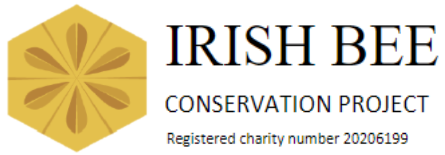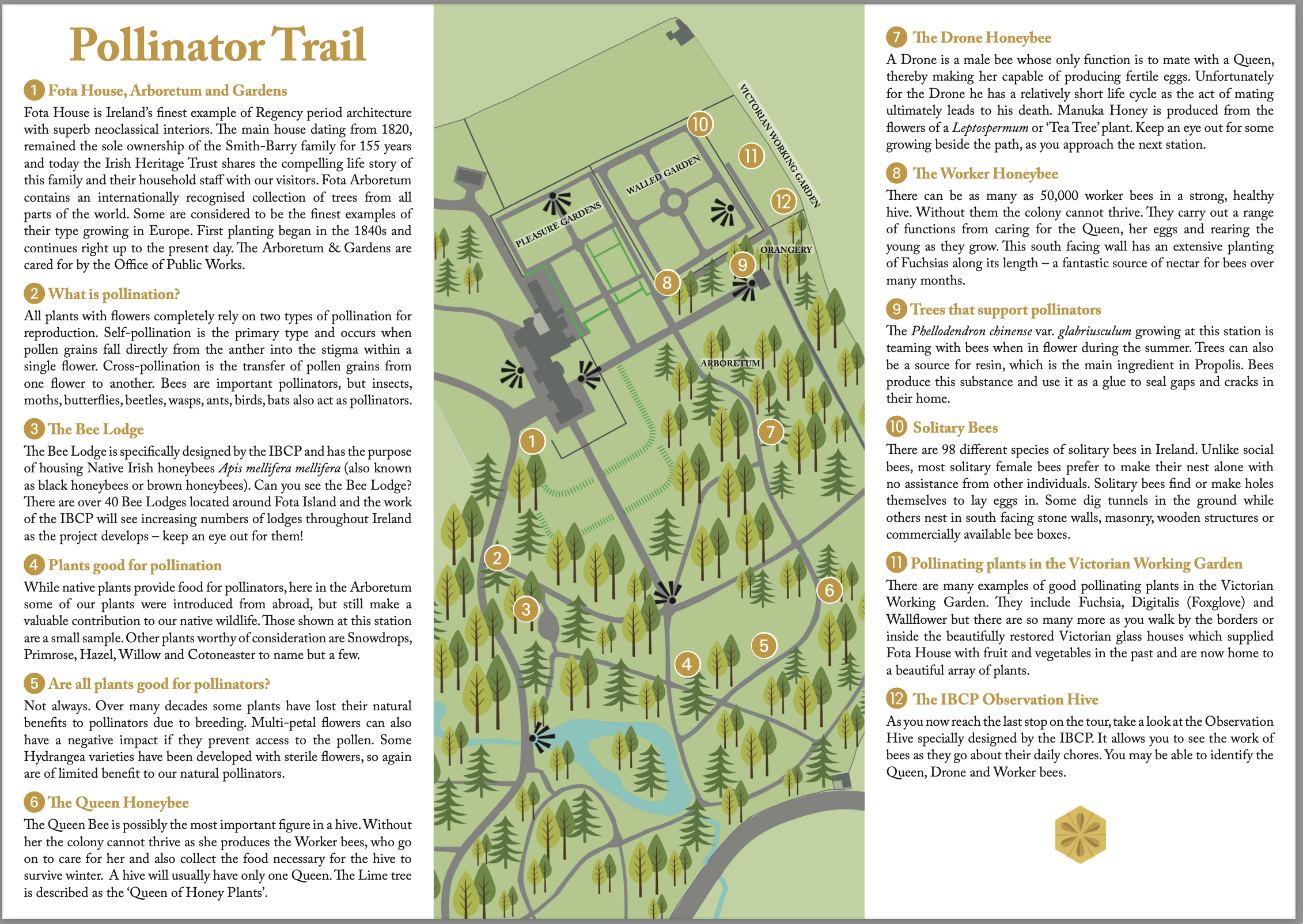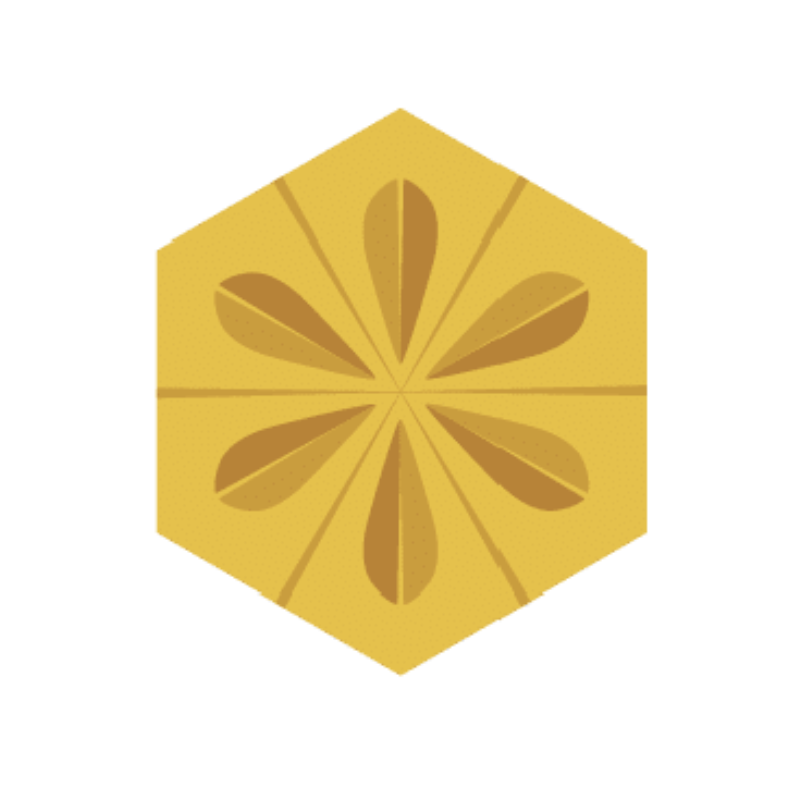Fota Pollinator Trail – Station 02
The Irish Bee Conservation Project (IBCP) helps our Irish native bee species survive. We do this through four initiatives: Research, Habitat Support, Biodiversity and Education. We love to help communities who wish to learn how to establish their own bee habitats.
The IBCP developed the Fota Pollinator Trail in association with the Office of Public Works (OPW) and The Irish Heritage Trust at Fota House, Arboretum and Gardens. We are not affiliated with any beekeeping association or federation. Our integral focus is conservation. You can learn more about us at station 12.
What is Pollination?
Types of Pollination
All plants having flowers completely rely on pollination method for reproduction. There are 2 types of pollination:
(1) Self Pollination
This is referred to as the primary type of pollination as it includes a single flower. Self-pollination occurs when pollen grains fall directly from anther into the stigma of the flower. This process is quite simple and fast, which leads to a reduction in genetic diversity as the sperm and egg cells of the flower share some genetic information.
Advantages of Self-pollination
• Self- pollination ensures that recessive characters are eliminated.
• The wastage of the pollen grain is very less compared to cross-pollination
• In the process of self- pollination, the purity of the race is maintained, as there is no diversity in the genes
• In self- pollination, there is no involvement of external factors like wind, water, and other pollinating agents.
• Self-pollination ensures that even a smaller quantity of produced pollen grains from plants have a good success rate in pollination.
Disadvantages
The major disadvantage of Self- pollination is there is no mixing up of genes. Due to which:
• The vigour and vitality of the race are reduced
• The immunity to diseases is reduced in the resultant offspring.

2) Cross-pollination
• It refers to a complex type of pollination that allows the transfer of pollen grains from the anther of the flower into the stigma of another flower.
• It can be done by such things as Wind, Insects, other Animals like birds, cattle etc. and even Water.
• This method leads to an increase in genetic diversity as different flowers will share and combine their genetic information to create unique offspring.
Advantages and Disadvantages Of Cross-pollination
Advantages
• The produced seeds are good in vigour and vitality.
• All unisexual plants can reproduce through the process of Cross-pollination.
• The recessive characters in the lineage are eliminated as a result of genetic recombination.
• This process improves the immunity of the offspring towards the diseases and other environmental factors.
• Cross-pollination introduces new genes into a sequence of species and this is mainly due to the fertilization between genetically different gametes.
Disadvantages
• In this process, there is a great wastage of pollen grains.
• Due to genetic recombination during meiosis, there are chances of eliminations of good qualities and additions of unwanted characteristics in offspring.


